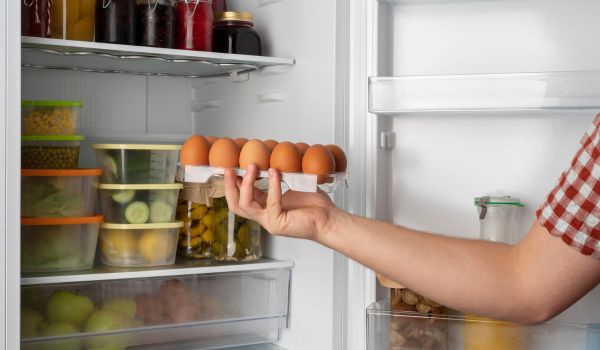How to Store Food in the Fridge:
This may seem like an unnecessary topic, but this is the minimal thing that makes all the difference in the quality of food in storage. Three key factors hold the quality of your food together. NRS Kitchen is a premier commercial refrigerator manufacturer emphasizing energy efficiency and cutting-edge temperature control systems to guarantee the safety and freshness of perishable foods.
Food safety: –
This is of prime importance as every single particle of your food will suffer in a toxic environment. A fridge keeps your food nutrients intact and fresh for a long time. This doesn’t assure the extinction of bacteria in your food.
Keeping food items like meat and fish far away from other items is a great way to ensure your food safety. Foods that are prone to bacteria manifestation should be kept far from other delicate food items. This small step can help preserve great quantities of food and maintain their taste for a very long time.
Temperature: –
The temperature inside your fridge and inside the container you have put the food in matter a lot. Storing a steaming hot pot of curry in an ice-cold refrigerator is a bad idea; rapid cooling will trap the bacteria inside and corrupt the food faster. Let your food cool down a bit, and then put it in a heavy-duty container to maximize its life.
Humidity: –
Once the moisture gets into your fast food and other fried goods, it makes them less crispy and, to be honest, disgustingly saggy. Trust us when we tell you, nobody wants that, ABSOLUTELY NOBODY.
But fast food was never meant to be refrigerated. The above paragraph was just an example of how humidity can ruin perfectly good foods. Now, let’s talk sense for a bit and tell you how your vegetables can be preserved for a better day… with the help of humidity.
The crisper section, which is right at the bottom of your fridge, is specially designed to prevent the circulation of fresh, cold air. Vegetables emit energy, and that energy heats that drawer; this enables the drawer to retain more moisture in it. The more the humidity, the stronger the natural flavor of the vegetable.
A layout of the perfect fridge
To give you an idea of good refrigerator storage organization, let me take you on a tour of my fridge. Here’s what you’ll usually find there:
The Top Shelf
Put your most instant cooking materials here, ready-to-eat noodles, dried tomatoes or a can of sauce. For better freshness, pickles, butter, bread, and condiments can be stored here.
The Middle Shelf
Eggs, broccoli, and anything that requires less moisture and more cooling can be put here. Store your leftovers here, pizza, salsa or maybe last night’s chicken. This keeps their flavours intact, and if some sauce or fat drips out of them and falls below, it won’t affect the dish underneath; we’ll tell you why.
The Bottom Shelf
Because of the dripping chicken fat above, the bottom shelf would be ruined…unless there is only meat and fish on it. Sausage, raw meat and any flesh are highly recommended as they require their proteins and flavours to be as fresh as they can be and as frozen as they can be. So, a dripping meat fat won’t ruin your non-vegetarian delicacy, it will only enhance it.
The Vegetable Crisper
If you must, store your vegetables in a breathable plastic bag with a passage open. Herbs like Cilantro and Celery can be stored along with radishes and cucumbers in this drawer. Remember to wash them when you take them out for cooking or raw consumption.
The Fridge Door
Of course, the most utilized space in the fridge, and probably the most unmanaged place as well, is The Fridge Door. Here are some tips on how to organize your most frequent grocery store.
The Top Shelf
Eggs, soft cheese, oregano, chilli flakes, butter anything you consume more frequently and anything which has a low melting point. This space is not very cold; it surrounds the articles in a cool bubble but doesn’t let them get hard and doesn’t let them freeze.
The Middle Shelf
Well, this is the place you will visit when you cook or decide to season the already-prepared meal. Ketchup, vinegar, chilli sauce, mustard and soya sauce are recommended to be put here. This space keeps them cold and fresh with their flavours intact.
The Bottom Shelf
We get the feeling that you already know what to put here, but we are going to tell you anyway. Cold drinks, milk cartons, juice boxes, water bottles or maybe something “party-worthy”… anything that deserves to be chilled can be put here. This is surely the most happening part of your whole fridge.
The Freezer
You likely store your frozen meats and vegetables here; it is also an amazing place to store heat-sensitive items. Yeast, baking goods, chicken stock and turkey fat are some examples that can be put here for a longer and tastier day ahead.
Why is it vital?
Well, we all want great food, don’t we? In a perfect world, that’s reason enough. The integrity of your food cannot be compromised at any cost, and if we describe the job of the fridge, it is meant to keep your food fresh. Keeping it carelessly will make an ironic scenario for sure.
Following the above layout, we ensure long life for your leftovers, newly bought items and condiments that taste better when they are fresh.
Fresh food is better food; no one can deny this fact. Arranging your fridge accordingly will help you find things faster, keep them organized and keep their natural flavours trapped inside them. This is why we buy refrigerators, and we can’t blame refrigerators for our poor organizing skills; now, can we? Enhance your food storage capacity and uphold the highest standards of quality and dependability in your commercial kitchen with NRS Kitchen.
